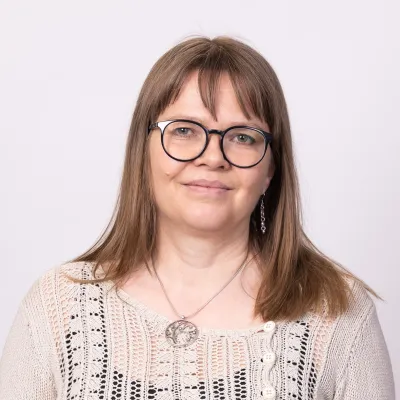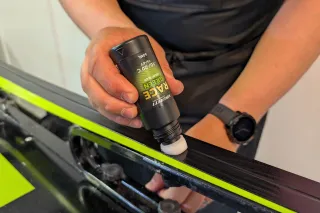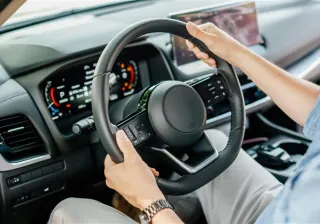Finland is at the forefront in developing textile recycling and related new business operations. The large-scale Telaketju network project, which produced good results, ended this year, but the project coordinated by VTT together with Lounais-Suomen Jätehuolto and associated new forms of business will be taken forward with the further funding confirmed in the early summer.
The EU Commission has decided that the next type of municipal waste to be collected separately is textiles. This means that Member States must organise separate collection of textiles by 2025. Finland is already taking steps in the matter as, at the time of the decision, the extensive Telaketju research project funded by the Ministry of the Environment and Tekes was in full swing.
Launched in 2017, the first part of the project entity to create a foundation for textile recycling technologies and ecosystem was completed this year. However, companies' interest in business in line with the circular economy and the EU's decision to start utilising textile waste meant that continuation is on the cards for Telaketju.
- As a research project on textile collection and recycling was already underway in Finland, we are moving forward faster than other countries. If the corporate partners involved in the project are able to develop their technologies and competence, they will have good export prospects to Europe and later to other parts of the world as well, says VTT Senior Scientist and Telaketju project coordinator Pirjo Heikkilä.
The position at the forefront is demonstrated by the fact that, according to Heikkilä, a sorting and pre-processing plant for textile waste is already in preparation in Finland. The investment is being implemented by Telaketju's second coordinator, Lounais-Suomen Jätehuolto.
- Individual recycling processes work relatively well, but the problem is that all parts of the value chain do not exist yet. At present, the separate collection of textiles is not systematic, but is only being carried out by local, individual operators.
In addition to organising collection, textiles must also be identified and sorted before they can be utilised in recycling processes. Separate devices suitable for sorting as well as identification technologies do exist, but there is no problem-free, large-scale sorter with good identification properties to combine them yet. Similarly, there is no industrial-scale plant suitable for chemical treatment at this stage.
However, the continuation of the Telaketju project will ensure that Finland is ready to collect textiles before the EU regulation enters into force.
The first phase of Telaketju focused on textile recycling. The two-year entity was funded by the Ministry of the Environment and Tekes – now Business Finland – and a large number of project participants.
- The idea was that all the steps must be in the pipeline at the same time. Collection and sorting should be developed simultaneously with recycling processes in order to achieve functional value chains. Textile can be recycled mechanically by deconstructing the fabric and yarn structure back to the fibre level, after which new textile products can be produced from it. When the fibre is in too poor a condition for recycling, it can be used to make, for example, new fibre through a chemical process, Heikkilä describes.
When the requirement for separate collection of textiles enters into force in little over five years, there must be a classification and preferably also uniform standards for the material to be recycled. Considering these classifications is one of the aims of Telaketju's follow-up phase.

Longer useful life – more instances of reuse
The new project funded by Business Finland that is now starting takes a broader perspective on the circular economy and, according to Heikkilä, also involves thinking more about new types of business models, the sharing economy and what products as a service could mean in the textile sector.
- We must be able to increase the useful life and reuse instances of textiles before they are recycled. Therefore, in the follow-up project, the focus will shift from recycling to new business models, including the use of digitalisation in the sharing economy or new forms such as products as a service. These aspects need to be strengthened if we want to reach carbon dioxide targets and material efficiency. Recycling is only a small part of a larger pattern, Heikkilä points out.
According to her, products as a service could mean, for example, that you would no longer need to own the clothes you use, but that they could be rented from a garment manufacturer or brand.
- The idea is that the ownership of the garment is retained by the company that made it. This increases the need of the textile company to manufacture a high-quality and durable product as the business of textile producers will be in high-quality products that can cost more and will return profits for them for a long time. In addition to actual service operations, the manufacturer has a system for steering materials for reuse – or if that is no longer possible, for recycling.
First businesses offering apparel as a service already exist: for example, the Finnish company Reima has launched a children's clothing service based on a monthly fee.
- In the future, clothing will be like streaming services: you no longer have to have shelves full of CDs at home but can order and watch a movie from a digital service instead. Thus, going forward, all garments or home textiles will not have to be your own, but can come through a service: when your taste changes or you want some variation, new curtains can be ordered from a service provider whose operations are based on sharing or joint ownership. This will also bring a new type of demand for textile maintenance and repair services.
Digitalisation, in turn, could also mean integrating the product information of materials into the product itself in the textile sector. On the other hand, a garment could also be accompanied by information on its history and use.
- Product information becoming readable to consumers as well would help the transparency of production. New forms of design or business can be found in, for example, how product information is managed, what it should include or how it can be utilised in the circular economy at different stages of the product's life cycle, Heikkilä envisions.
Understanding of clothes and their use is changing
The aim of the next phase of the Telaketju project is to understand consumers even better – especially how they receive new types of business models designed for circular economy products. The timing is good as awareness of ecological clothing and the need of consumers to find new alternatives has quickly risen to a whole new level.
- Climate anxiety has increased consumers' need to find solutions in line with the circular economy when compared to the situation when we were starting the first phase of Telaketju three years ago. The will to make a change has also strengthened among decision-makers. These things make it possible for something to actually happen here as well.
The understanding of clothes and their use is changing radically: we are moving from mass-produced latest fashions left to languish in closets to more durable, good quality and long-lasting products.
- We are all involved in the textile cycle and in creating demand for new solutions and products, but also in producing raw materials for recycling. This is an exciting ecosystem as it involves a product that is so close and important to consumers, one that is right there on the skin.
On the other hand, acquiring clothing as a service, for example, is not a completely new idea with no foundation: after all, pieces such as occasion wear have been rented for a long time in Finland as well.
- However, this kind of more extensive leasing is new: for example, with garments such as jacket suits and men's suits used in clean indoor work, one may ask if they need to be owned by the person. Through a service, it could be possible to always have a suitable number of clothes that fit you available.
- However, we need to be better acquainted with consumer behaviour, and consumer research will be part of Telaketju's follow-up phase, Heikkilä says.





